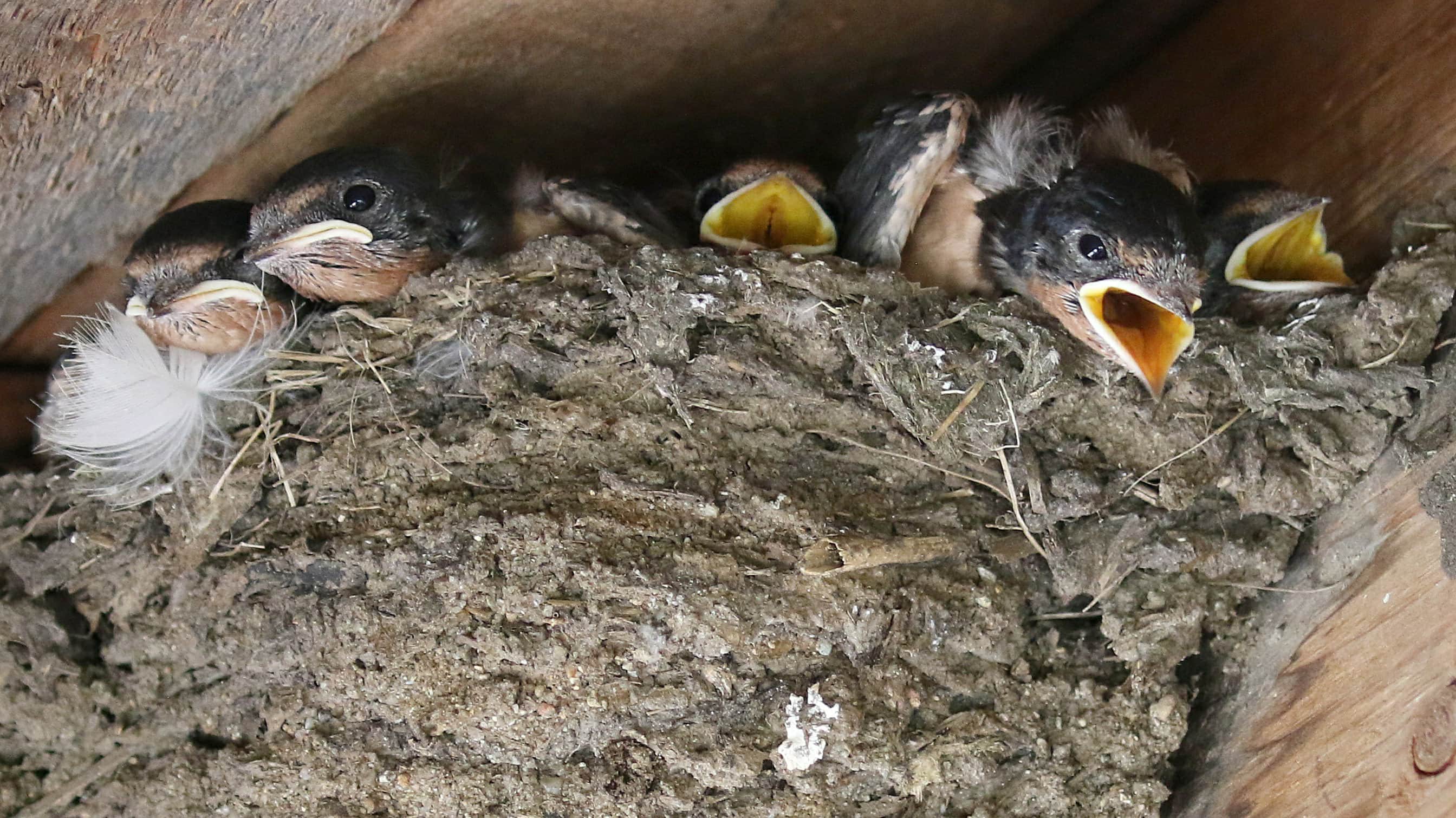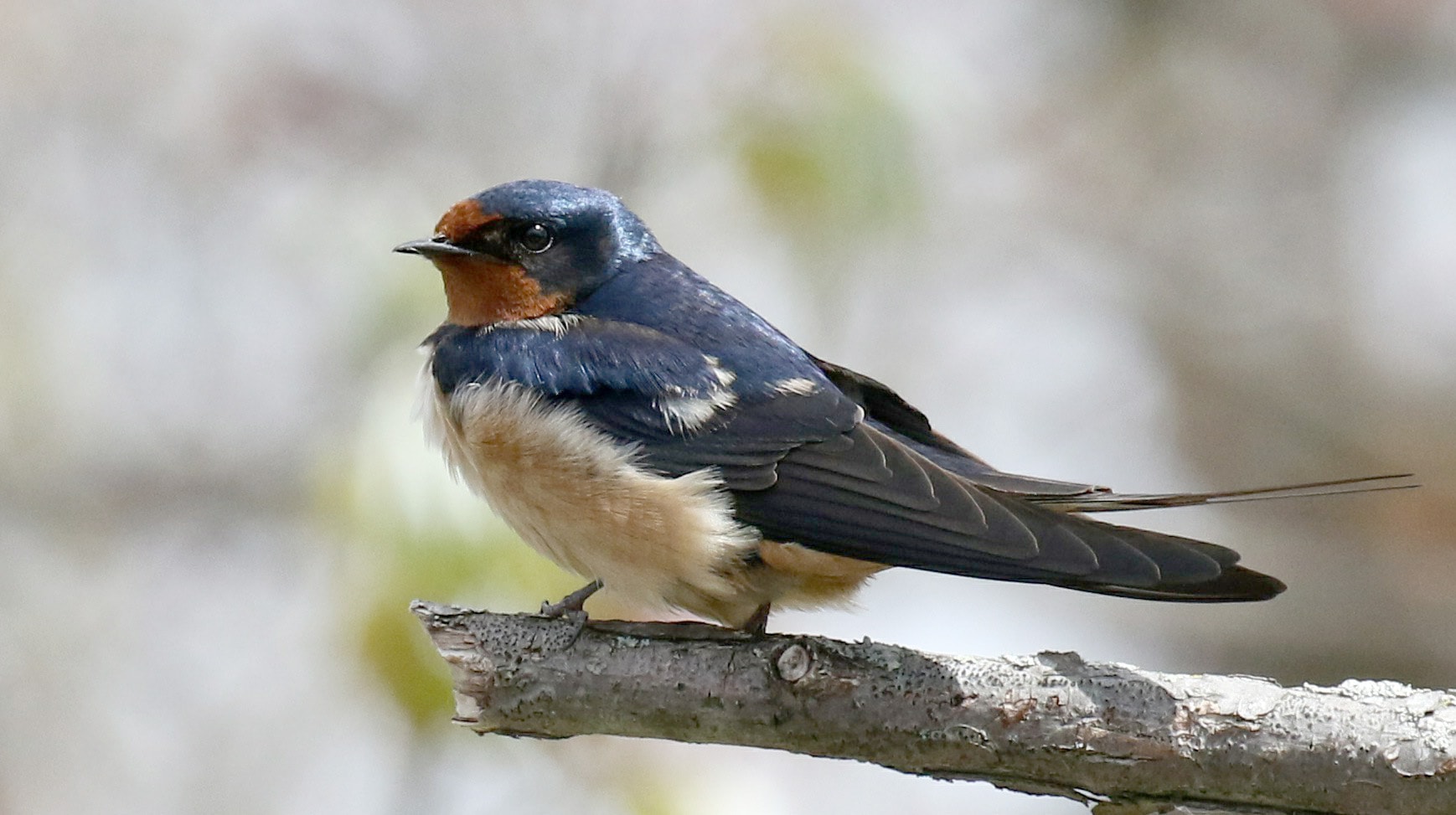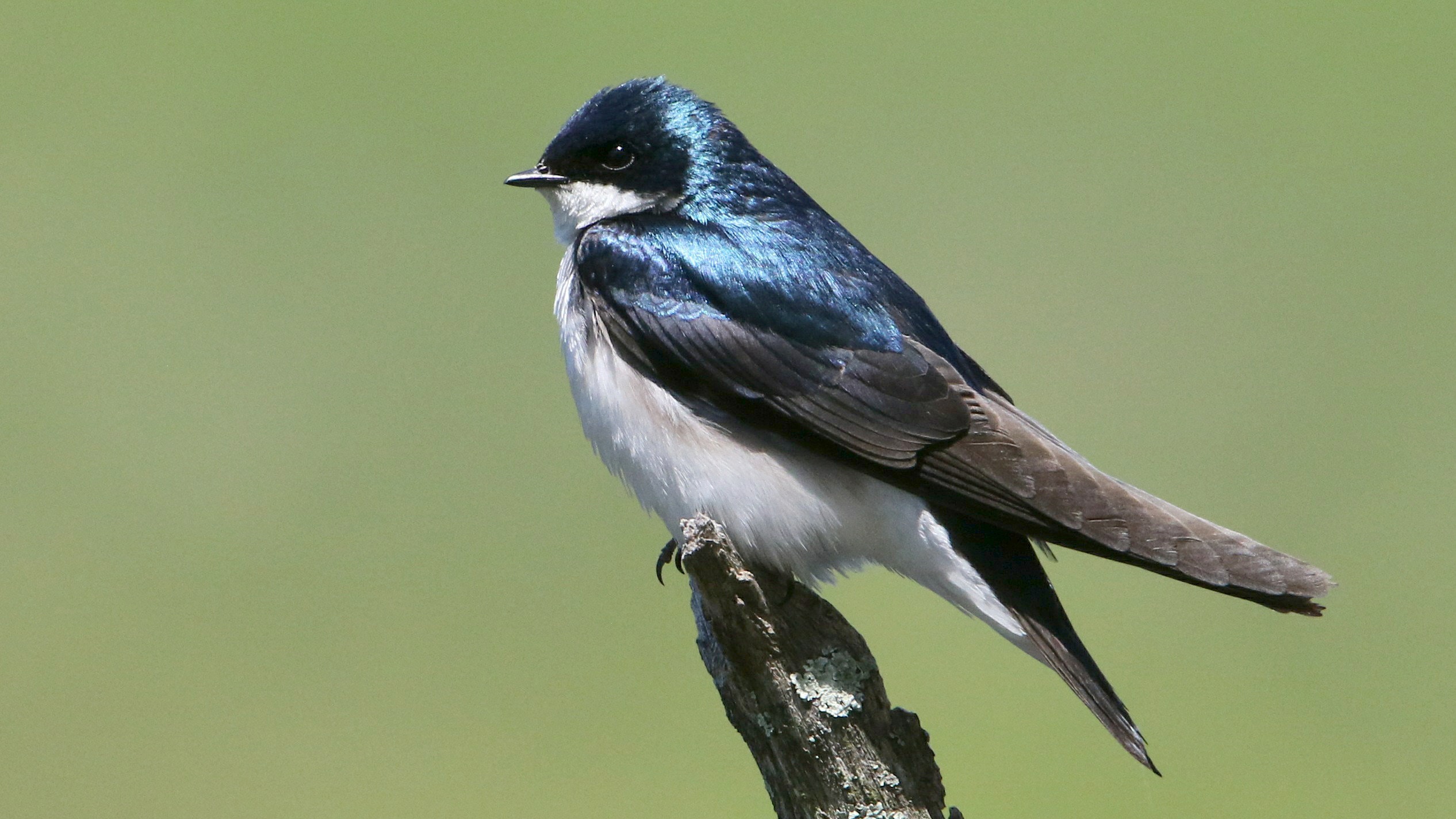
In May, our colorful barn swallows are back, either passing through or staying to breed in our area. Maybe you’ve seen a barn swallow (Hirundo rustica) without realizing it.
Have you noticed swallows swooping and turning as they fly over a pond or field, catching and actually swallowing airborne insects on the wing? Or a line of swallows perched along a wire? The barn swallows among them have long, deeply forked tails. You can often spot barn swallows If you know to look for that distinctive forked tail.
Males and females are similarly colored, with steel-blue above, black wings, chestnut forehead and throat, and orange or buff below. They have long, pointed wings. They’re slightly larger than tree swallows (Tachycineta bicolor, https://westboroughlandtrust.org/nn/nn119), which are the familiar swallows you might see nesting in bluebird boxes or holes in dead trees. Tree swallows have short, slightly notched tails and are white below and either iridescent blue above (males) or dull brown above (females and first-year males).
What makes the barn swallow’s long forked tail so special? It forks because the outer tail feathers are much longer than the inner ones. Such a tail has both advantages and disadvantages. On the plus side, it helps to create lift and makes barn swallows especially maneuverable and agile in flight, all the better for pursuing flying insects. Barn swallows also dip down to drink water on the wing. They forage lower and closer to the ground or water than many other local swallows.

There’s another plus. In choosing mates, female barn swallows tend to go for males with the longest tails. Why? The tail’s length is a clue to a potential mate’s health and ability to provide insects to fast-growing chicks. Males that are well fed, strong, and not weakened by blood-sucking parasites are most able to grow the longest tails. Females also like males with deeper orange on the breast, a color due to carotenoid pigments (from food) that strengthen the bird’s immune system.
On the minus side, a long tail takes more energy to grow and use. It can also make a male more obvious and vulnerable to predators such as hawks. This vulnerability may keep inefficiently long tails from evolving over time, in a sort of balancing of plusses and minuses in nature.
Keep an eye out for barn swallows near barns. Their habit of nesting in barns gave them their name, but there’s more to the story. Barn swallows need a barn in the right habitat – near an open field for foraging for insects, and near a pond or other water for mud for nest-building. A barn on a farm with livestock is best. An old barn in a town or city won’t necessarily do, especially if aggressive house sparrows (Passer domesticus, https://westboroughlandtrust.org/nn/nn225) occupy the barn year-round.
Barn swallows originally nested in caves but long ago adapted to living near humans by switching to human structures such as barns. This switch took place as settlers populated North America, but it started even earlier. Fortunately, today you can find barn swallows nesting on bridges, culverts, sheds, and docks. They don’t come to feeders.
Barn swallows sing a long musical twitter with some grating or mechanical sounds (https://www.allaboutbirds.org/guide/Barn_Swallow/sounds).

Male and female pair up soon after arriving here from far-away wintering grounds in Central or South America. Look for nests under eaves and overhangs. A pair sets about building a mud cup nest and lining it with grass and feathers. Both male and female fetch mud of the right consistency, carrying pellets of mud and grass in their beaks to build a cup on a ledge, or a half-cup attached to a wall. They may travel up to half a mile for mud. They can make more than a thousand trips to complete a nest.
Both parent birds incubate the eggs and bring food to the chicks, typically four or five. The chicks develop in the nest for three weeks and then stay near the nest, still fed by parents, for a week or two. In August, barn swallows form flocks and begin to migrate southward.
How are barn swallows faring? Overall, they’re abundant and widespread, with at least six subspecies worldwide. In the U.S. and Canada, their numbers have decreased by about 38% since 1970. Recent declines in insects don’t bode well for barn swallows or the many other birds that depend on flying insects for food. Reduced use of pesticides, insecticides, and herbicides would help, along with avoiding pollution and preserving wetlands, ponds, and rivers.
This spring, remember that nesting barn swallows are often considered good luck.
What else might you enjoy in nature this spring? Check the WCLT Nature Notes online monthly index for May and June.
Do you know that Westborough has 60 miles of trails, and WCLT has trail maps? The Westborough Community Land Trust (WCLT) preserves, protects, and promotes open space in Westborough (westboroughlandtrust.org and facebook.com/westboroughlandtrust).

















